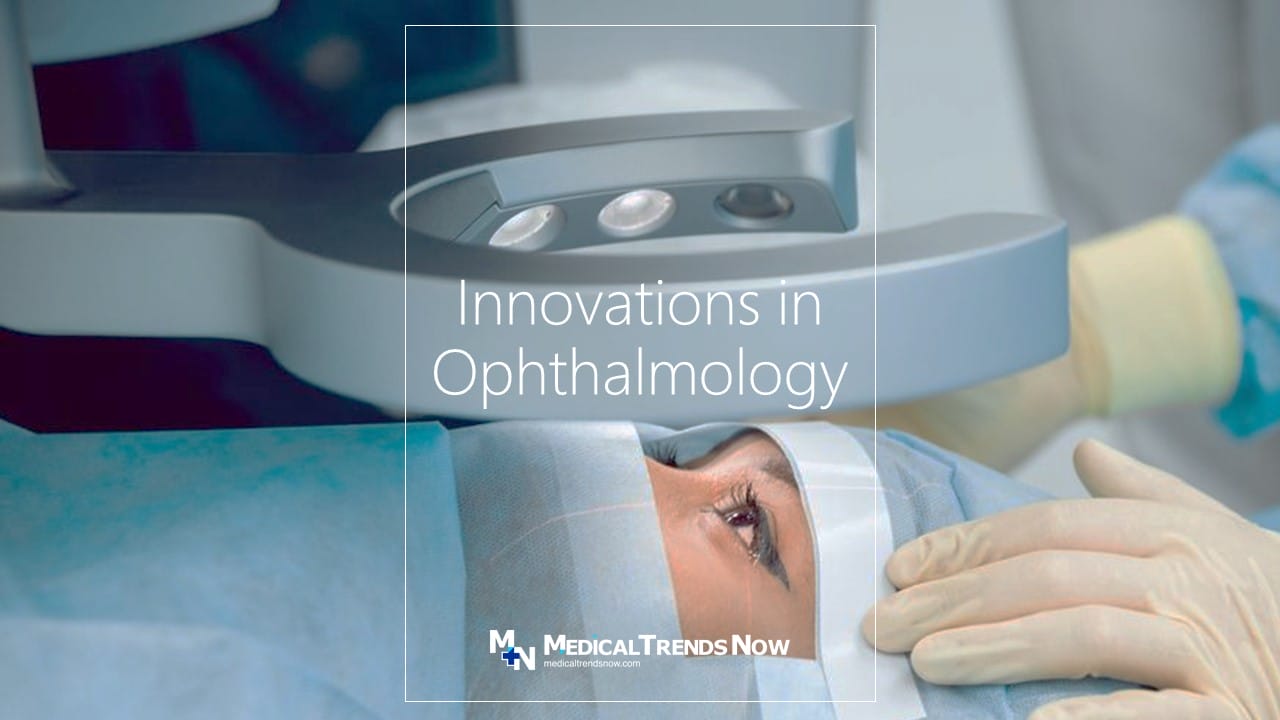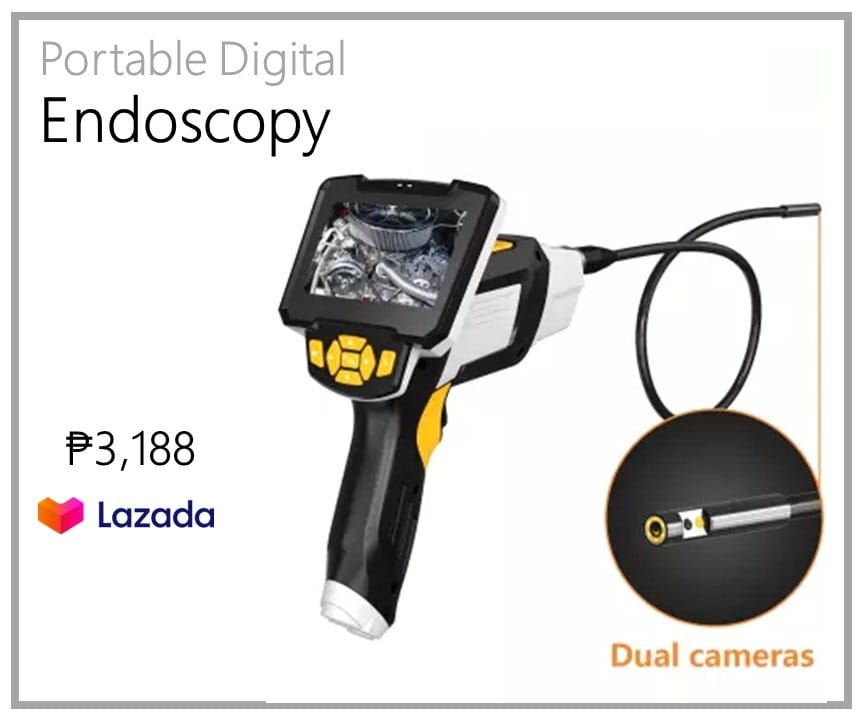Table of Contents
In the world of visual sciences, there is always room for improvement. We have seen many Innovations in Ophthalmology in the past decades. These innovations in visual sciences have the potential to change the way we see the world.
In the past few decades, many innovations in ophthalmology have vastly improved treatments for various eye conditions.
In this article, we will explore some of these recent advancements and look at what the future of visual sciences holds.
The future of ophthalmology looks bright, and patients can look forward to even more advances in the years to come.
Here are the Top 29 Latest Innovations in Ophthalmology
1. Virtual Reality for Ophthalmologists
In the last decade, there has been a surge in the development of virtual reality technology.
This technology is evolving in a variety of fields, including ophthalmology. Virtual reality can help train ophthalmologists and provide patients with a more immersive experience when undergoing specific procedures.
2. Robotic Eye Surgery
In the field of ophthalmology, robotic eye surgery is a relatively new technology that is proven highly effective in treating certain eye conditions.
In robotic eye surgery, a surgeon uses a computerized system to guide miniature surgical instruments to the site of the operation.
This approach allows for greater precision and control than is possible with traditional surgery. Robotic eye surgery is most commonly used to treat conditions such as retinal detachment and cataracts.
3. Cornea and Refractive Surgery
Innovations in ophthalmology, particularly in cornea and refractive surgery, have significantly improved patients.
Techniques such as laser-assisted in situ keratomileusis (LASIK) and femtosecond laser-assisted keratoplasty (FLEK) are now commonplace and have helped to reduce the incidence of postoperative complications.
In addition, new corneal implants such as the Boston Keratoprosthesis are providing hope for patients with severe corneal disease.
4. Neuro-Ophthalmology
Innovations in Neuro-Ophthalmology are constantly evolving with the help of new biomedical and biotechnologies.
This area of ophthalmology is continuously evolving and improving, which helps to improve the quality of life for those affected by neuro-ophthalmic diseases. Many advances have been developing and evolving in recent years, including new surgical techniques and stem cells.
Researchers are also investigating new ways to diagnose and treat neuro-ophthalmic diseases.
5. Bionic Eye Implants
Bionic eye implants are a recent trend in ophthalmology. They are small electronic devices that are implanted into the eye to restore or improve vision.
Medical doctors use these implants in people who have lost their vision due to damage to the eye or the optic nerve.
The implants work by sending electrical signals to the brain, which allow the person to see again.
6. Pediatric Ophthalmology
The field of pediatric ophthalmology is constantly evolving with new treatments, surgery, and innovations in ophthalmology.
One such innovation is the development of robotic surgery for pediatric patients. This technology offers smaller incisions, reduced blood loss, and faster healing times. Robotic surgery is also very accurate than traditional surgery, resulting in fewer complications and better outcomes.
Another recent development in pediatric ophthalmology is the use of stem cells to treat vision problems.
7. Refractive Surgery
Refractive surgery is one of the most rapidly advancing fields in medicine. In recent years, there have been several innovations in ophthalmology that have made the procedure safer and more effective.
One such innovation is femtosecond laser technology, using it to create the corneal flap during LASIK surgery.
This technology allows for greater accuracy and precision and results in a quicker and more comfortable recovery for patients.
8. Oculoplastic and Orbital Surgery
Oculoplastic surgery is a field of surgery that specializes in the surgical treatment of the eyelids, orbits, and lacrimal system.
The field of oculoplastic surgery is constantly evolving, with new techniques and innovations in ophthalmology.
One such innovation is the use of 3D printing to create custom-made implants for oculoplastic surgery.
9. Innovations in Ophthalmology – Optic Disk
Optic disks are the part of the eye where light is first processed. They are found in the back of the eye and are responsible for sending messages to the brain about what is being seen.
Because of their importance, optic disks have been a focus of research for many years.
In recent decades, there have been several innovations in optic disk technology that have led to improved vision for patients.
10. Ophthalmic Pathology
The field of ophthalmology is constantly evolving with new technologies and treatments. In particular, the field of pathology is seeing some exciting innovations in ophthalmology. One such innovation is the use of artificial intelligence to help identify and diagnose eye diseases.
This technology can help to improve accuracy and speed up the diagnosis process.
Additionally, new techniques are evolving for imaging the eye, which can help to provide a more detailed view of the retina and other structures within the eye.
11. Post-cataract Surgery Endophtalmitis
Innovations in Post-cataract Surgery Endophtalmitis have led to a decrease in the incidence of the condition.
A recent study published in the journal “Trends in Ophthalmology” reviewed the latest innovations in post-cataract surgery endophthalmitis and found that the condition’s incidence has decreased significantly in recent years.
The study’s authors attribute this decrease to a number of factors, including improvements in surgical technique and advances in medical technology.
12. Ocular Tumors – Innovations in Ophthalmology
In the last decade, there have been several exciting innovations in ophthalmology, particularly in the treatment of ocular tumors.
One such innovation is the use of intraocular injections of chemotherapy agents. This approach has shown promising results in the treatment of both primary and metastatic tumors. Another recent development is the use of lasers to destroy tumor cells.
This approach is particularly beneficial for tumors in difficult-to-reach parts of the eye.
13. Axial Length Scanning
Axial length scanning is a technique used in ophthalmology to measure the length of the eye.
This measurement is vital for diagnosing and treating conditions such as myopia and glaucoma. In recent years, there has been a trend towards using axial length scanning to diagnose and treat these conditions.
This trend is due, in part, to the accuracy of axial length scanning and the ability of this technique to detect early signs of disease.
14. Retinal Nerve Fiber Layer
The retina is a thin layer of cells that lines the back of the eye. It is responsible for capturing light, converting it into electrical signals, and sending it to the brain.
The retina is also responsible for our vision. Damage to the retina can lead to blindness.
One of the leading causes of damage to the retina is the loss of nerve fibers. These nerve fibers are responsible for transmitting information from the retina to the brain.
15. Retinal Detachment Due To Macular Hole In High Myopia
Retinal detachment is a serious complication associated with various eye diseases, including macular hole in high myopia. In the past, the retinal detachment was often treated surgically.
However, recent innovations in ophthalmology, particularly in retinal detachment treatment, have led to the development of new, less invasive methods.
These new methods include vitrectomy and laser surgery. Vitrectomy is a surgical procedure where the vitreous humor is removed from the eye.
16. Proliferative Vitreoretinopathy
Proliferative vitreoretinopathy (PVR) is a rare eye disorder that can occur after surgery to repair a detached retina.
The condition causes the growth of new blood vessels on the surface of the retina, which can lead to vision loss. While there is no cure for PVR, recent innovations in ophthalmology treatment options are helping to improve the prognosis for patients.
One such innovation is the use of stem cells to promote healing and prevent vision loss.
17. Optical Coherence Tomography
Optical coherence tomography (OCT) is a non-invasive imaging technique used to visualize the eye’s internal structure.
OCT has been used to diagnose and monitor a variety of eye diseases, including macular degeneration, diabetic retinopathy, and glaucoma.
In recent years, there have been several innovations in OCT technology that have made the technique even more valuable for diagnosing and monitoring eye disease.
18. Central Eales Disease
Central Eales disease is a rare eye disorder due to progressive vision loss.
There are currently no effective treatments for the condition, but researchers are exploring new therapies that may help improve the prognosis for patients with the disease.
One such therapy involves the use of stem cells to regenerate damaged tissue in the eye. Another development approach is gene therapy to correct defects in the DNA that cause Central Eales disease.
19. Infectious Crystalline Keratopathy and Endophthalmitis
Infectious crystalline keratopathy and endophthalmitis are significant causes of blindness in the developing world.
In recent years, however, there have been several innovations in ophthalmology and the treatment of these diseases, which have led to improved outcomes for patients.
One such innovation is the use of corticosteroids to treat infectious crystalline keratopathy. This is more effective than the traditional treatment of surgery and antibiotics.
20. Fluorescein Angiography
Fluorescein angiography is a medical test that uses a special dye and camera to take pictures of the inside of the eye.
The dye is injected into a vein in your arm and flows through the blood vessels in your body to the retina at the back of your eye.
When the dye reaches the retina, it lights up, and physicians can see it on a particular camera. This camera takes pictures of the inside of your eye as the dye moves through it.
21. Orbital Hydatid Disease
Orbital hydatid disease is a rare parasitic infection that most often affects the eye.
While there have been few advances in treatment for the disease in recent years, there have been some notable innovations in ophthalmology, particularly in diagnosis, that are helping to improve patient outcomes.
New imaging techniques, such as ultrasound and computed tomography (CT), are making it easier to detect and diagnose orbital hydatid disease early, which is crucial for ensuring successful treatment.
22. Ophthalmoscopy – Innovations in Ophthalmology
Innovations in ophthalmoscopy have led to better detection and treatment of vision problems.
Some of the latest innovations in ophthalmology include adaptive optics, swept-source optical coherence tomography, and ultrahigh-resolution optical coherence tomography.
These technologies are helping to improve our understanding of eye diseases and could lead to new treatments. They are also making it possible to diagnose conditions that were previously undetectable.
23. Branch Retinal Artery Occlusion – Innovations in Ophthalmology
Branch retinal artery occlusion (BRAO) is a rare but severe eye condition that can lead to vision loss.
While there is no cure for BRAO, recent innovations in treatment options have improved the outlook for patients with this condition. In particular, laser therapy and medication therapy positively affect restoring vision in patients with BRAO.
24. Uveitis – Innovations in Ophthalmology
Uveitis is a condition that affects the uvea, which is the layer of the eye between the white of the eye and the retina.
Uveitis can lead to vision loss if not treated well by medical professionals. There are many different types of uveitis, and each type can require a different treatment approach.
In recent years, there have been several innovations in the treatment of uveitis, including new medications and devices that can be used to treat the condition.
25. Amniotic Membrane Grafting For Conjunctival Defect
A conjunctival defect is a hole or tear in the conjunctiva, the thin membrane that covers the front of the eye.
Conjunctival defects can occur as a result of injury, surgery, or infection and can lead to vision problems.
Amniotic membrane grafting is a surgical procedure by a skilled and professional medical doctor to repair conjunctival defects.
One such disease is conjunctival defects, which are the outcome of various factors, including surgery, inflammation, or injury.
Amniotic membrane grafting is a relatively simple and minimally invasive procedure that can effectively treat conjunctival defects.
27. Linear Nevus Sebaceus Syndrome – Innovations in Ophthalmology
Linear nevus sebaceus syndrome, also known as LNSS, is a rare skin disorder characterized by the development of linear, sebaceous skin lesions.
The lesions are typically present at birth or develop in the first few months of life and can grow to a length of several inches.
Mutations cause LNSS in the tumor suppressor gene PTEN. The syndrome is often associated with developmental delays, intellectual disability, and seizures.
27. Acute Comitant Strabismis After Chalazion Incision
Strabismus, or misaligned eyes, can be a debilitating condition, leading to decreased vision and even blindness.
One common cause of strabismus is a chalazion or inflammation of the eyelid.
Chalazion surgery is a standard procedure to treat this condition, but it can sometimes lead to acute comitant strabismus or strabismus that occurs simultaneously with the chalazion surgery.
28. Innovations in Ophthalmology – Glaucoma
Glaucoma is a leading cause of blindness, and while there is no cure, treatments are available to help control the disease. In recent years, there have been several innovations in glaucoma treatment, including new medications and surgical procedures.
These new treatments have more effective than older methods, and they offer hope for people with glaucoma who have not responded to traditional therapies.
29. Orbital Surgery – Innovations in Ophthalmology
Innovations in orbital surgery have led to improved patient outcomes. This is especially true for those who suffer from Graves’ disease, a condition that results in the enlargement of the thyroid gland and can cause the eyes to bulge. Orbital surgery can now be performed using a minimally invasive approach, which results in less pain and scarring for patients.
Conclusion: Innovations in Ophthalmology
In conclusion, innovations in ophthalmology present a promising future for visual sciences. By developing new technologies and treatments, we are able to improve the quality of life for those affected by vision problems. I urge you to learn more about these advancements and how they may be able to help you or someone you know.














